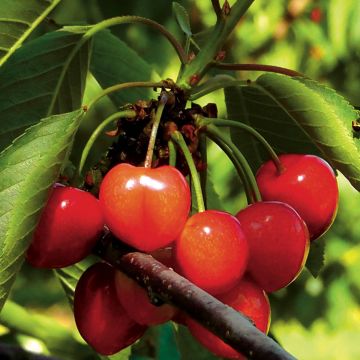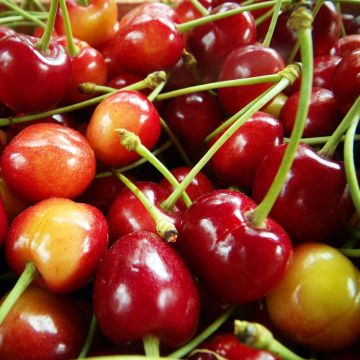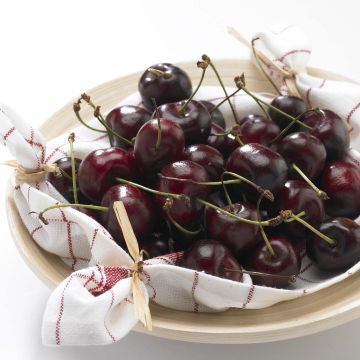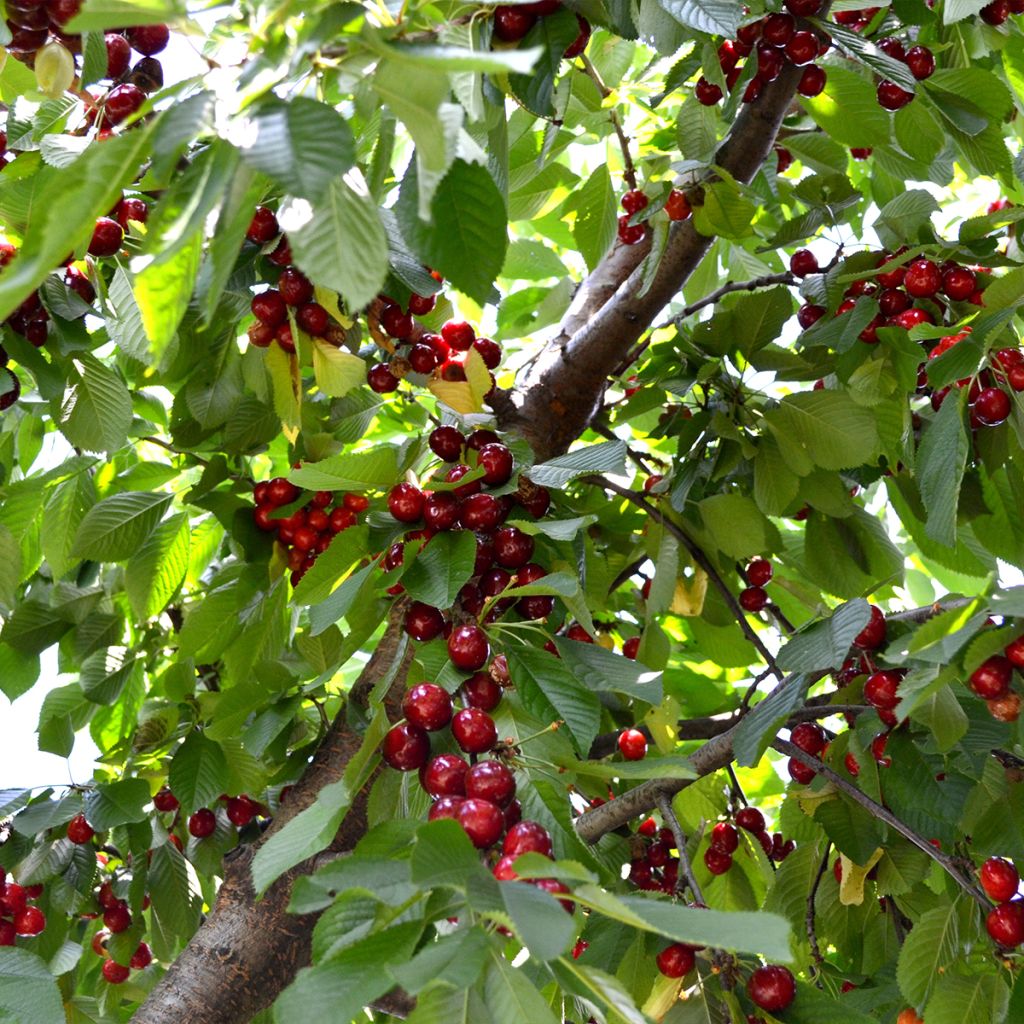

Prunus avium Schneiders Späte Knorpelkirsche - Cherry Tree
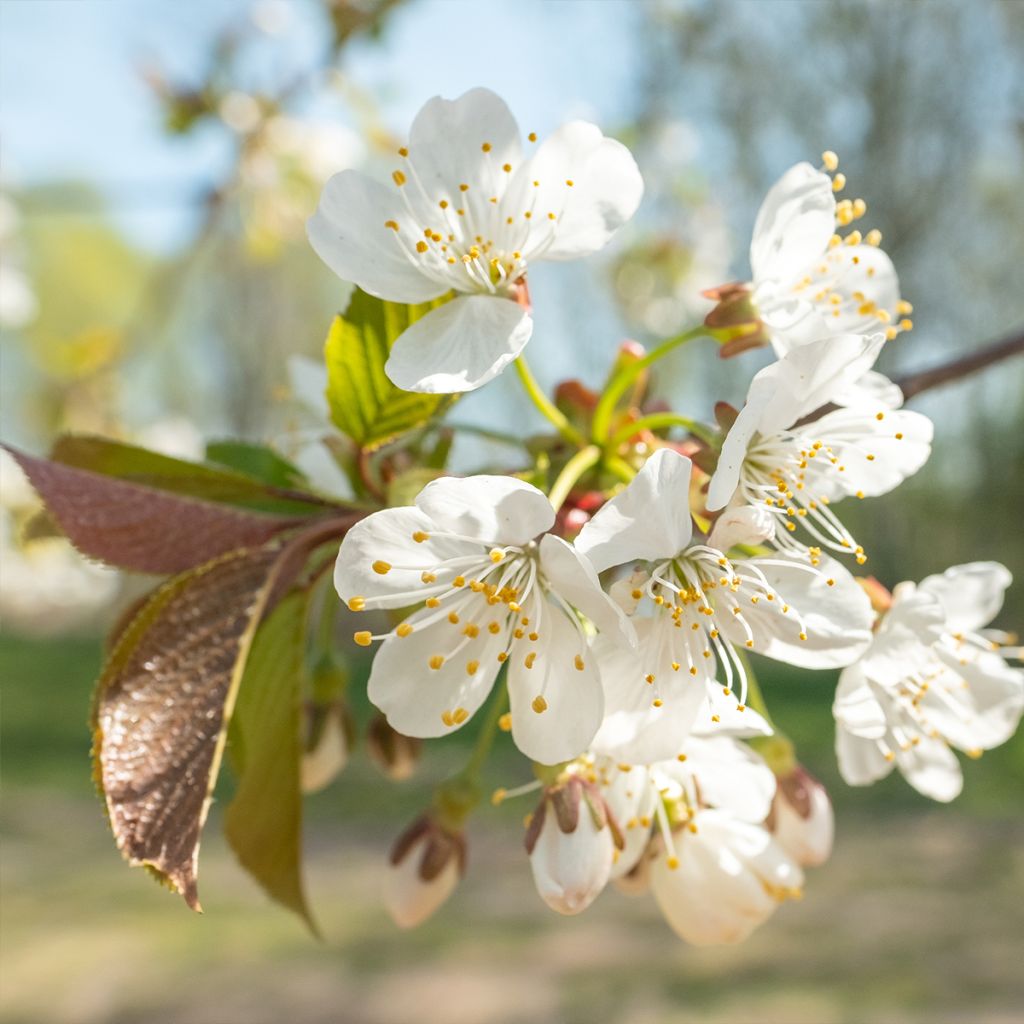

Prunus avium Schneiders Späte Knorpelkirsche - Cherry Tree
Prunus avium Schneiders Späte Knorpelkirsche - Cherry Tree
Prunus avium Schneiders Späte Knorpelkirsche
Wild Cherry, Sweet Cherry, Bird Cherry
Special offer!
Receive a €20 voucher for any order over €90 (excluding delivery costs, credit notes, and plastic-free options)!
1- Add your favorite plants to your cart.
2- Once you have reached €90, confirm your order (you can even choose the delivery date!).
3- As soon as your order is shipped, you will receive an email containing your voucher code, valid for 3 months (90 days).
Your voucher is unique and can only be used once, for any order with a minimum value of €20, excluding delivery costs.
Can be combined with other current offers, non-divisible and non-refundable.
Home or relay delivery (depending on size and destination)
Schedule delivery date,
and select date in basket
This plant carries a 6 months recovery warranty
More information
We guarantee the quality of our plants for a full growing cycle, and will replace at our expense any plant that fails to recover under normal climatic and planting conditions.

Description
The 'Schneiders Late Morello Cherry' is an old, vigorous variety with good productivity. It is particularly appreciated for its very large cherries in July, which have firm flesh and a very aromatic taste. These cherries are delicious fresh and can also be used for preserves, jams, and compotes. This cherry tree is of medium size and has a pyramid shape, making it suitable for small gardens. Easy to grow and cold-resistant, it thrives in most slightly moist soils.
The Cherry tree, Latin name Prunus avium, belongs to the large Rosaceae family, which includes most of our fruit trees as well as many ornamental plants. It is a medium-sized tree, reaching a height of 5 to 10m (16 to 33ft) at maturity. Its rounded habit provides a beautiful shaded space, particularly enjoyable during the summer. Its alternate, toothed leaves are shiny and dark green, turning a lovely russet color in autumn before falling. Cherries are rich in vitamin C, minerals, and trace elements.
'Schneiders Late Morello Cherry' is an old variety that was discovered by chance in 1850 in the state of Brandenburg, in eastern Germany (literally: Schneider's late morello). This tree has a more or less pyramidal, upright habit and reaches a maximum height of 6m (20ft) with a spread of 3.50m (11ft) after 10 years, making it a good choice for small gardens. It has vigorous growth (40-50cm (16-20in) per year) and blooms in March-April (or even May in Germany), producing beautiful white flowers measuring 2 to 4cm (1 to 2in) in diameter. Its foliage is a beautiful, fairly light green. This variety bears fruit in July, producing very large dark red cherries that are moderately prone to splitting in case of prolonged rain. The flesh is firm and aromatic, delicious when eaten fresh and well-suited for preserves, desserts, and jams.
This cherry tree is not self-fertile; it requires pollination from another tree of a variety such as Hedelfingen, Kordia, Oktavia, Regina, or Sunburst. Schneiders Late Morello Cherry will then demonstrate good productivity.
Easy to grow, this cherry tree thrives in most soils, as long as it has some moisture. It even appreciates a certain level of humidity if the soil is well-drained and thrives in full sun. The flowers are damaged by spring frosts, so it is recommended to plant cherry trees in sheltered locations, facing west and protected from cold winds in regions with significant late frosts. Nevertheless, the very abundant flowering often leads to satisfactory fruit set. The cherry tree is a charming small tree that is both delicious and ornamental, resistant to bacterial canker, and requires almost no maintenance. In this variety, fruit rot and brown rot are the main diseases to watch out for. The cherry tree can be planted in a short grass meadow, at the back of a border, or in an orchard, alongside apple trees, pear trees, plum trees, and why not a persimmon tree to add a touch of uniqueness.
Report an error about the product description
Prunus avium Schneiders Späte Knorpelkirsche - Cherry Tree in pictures
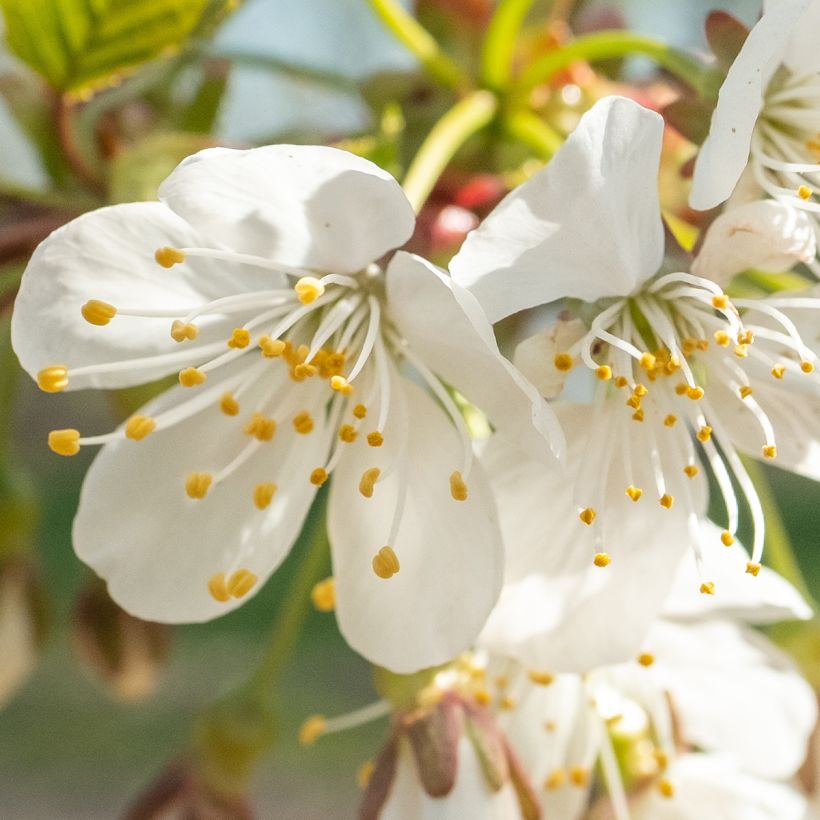

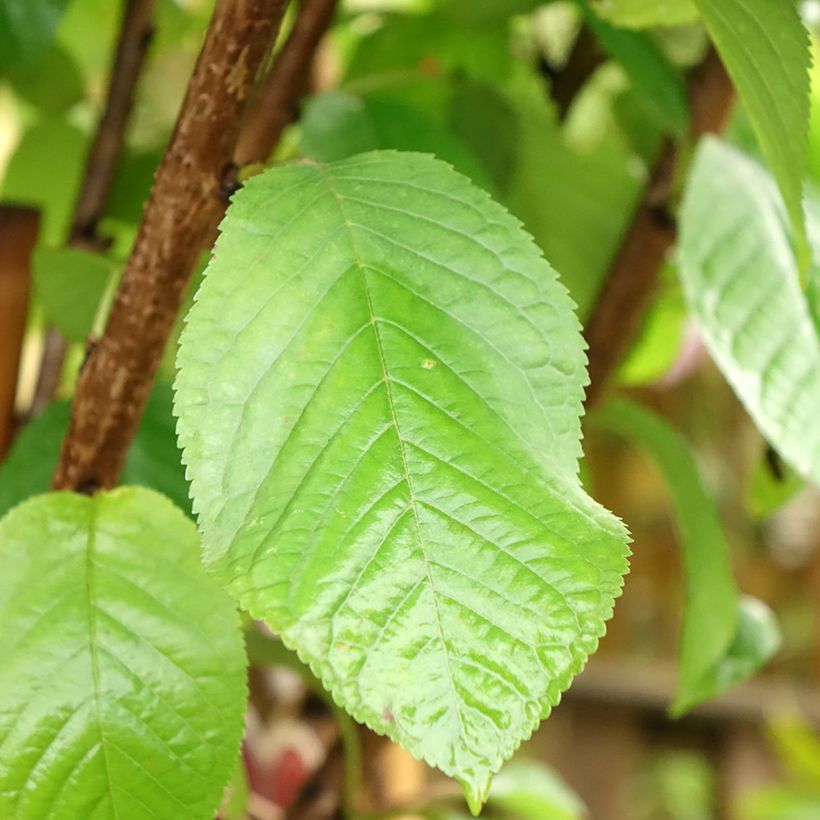

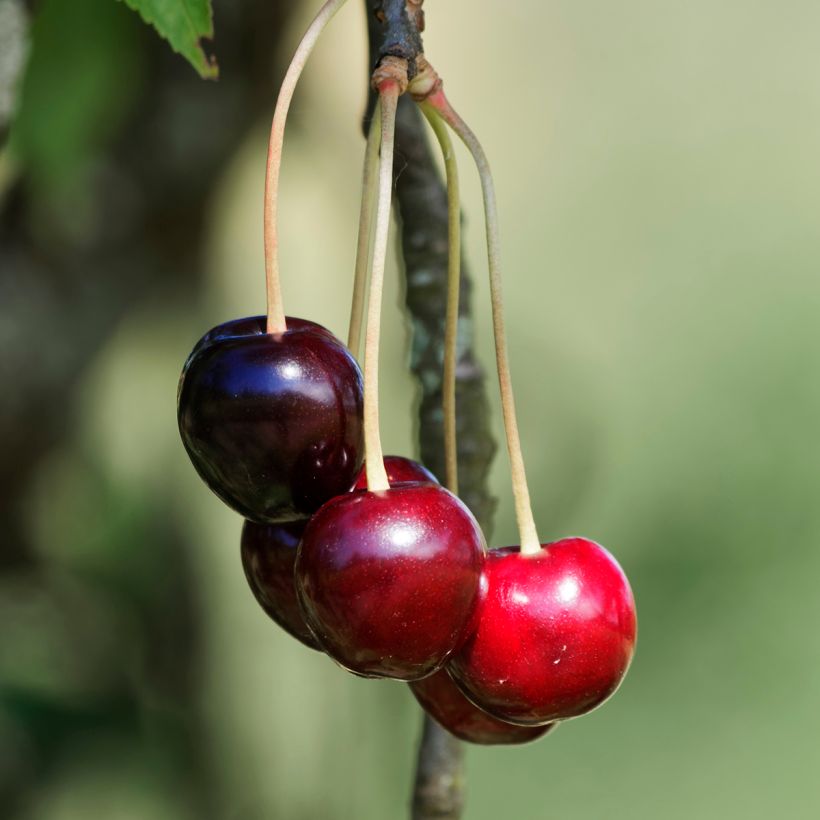

Plant habit
Fruit
Flowering
Foliage
Botanical data
Prunus
avium
Schneiders Späte Knorpelkirsche
Rosaceae
Wild Cherry, Sweet Cherry, Bird Cherry
Cultivar or hybrid
Other Cherry trees
View all →Planting and care
Easy to grow, the Cherry tree thrives in all types of soil, whether acidic or chalky. It prefers moist, light soils and dislikes heavy, clay soils. Choose a sunny location. To minimize the risk of late frosts on the flowers, it is recommended to plant the Cherry tree in a sheltered position, facing west and protected from cold winds in regions that experience spring frosts. Planting is preferably done in autumn. If you plant multiple trees, space them 4 to 5 metres (13 to 16 feet) apart for cup-shaped plants.
Loosen the soil deeply, remove stones and unwanted weeds. Add some sand to improve drainage. Dig a hole 4 to 5 times the volume of the root ball. Make sure to separate the subsoil from the topsoil. Mix crushed horn or well-rotted compost or potting soil with the subsoil and pour this mixture into the planting hole. Install a stake. Place the root ball, cover with the topsoil and firm it down. Water generously (about 10 L). Tie the tree to the stake, crossing the tie in a figure-eight shape, without touching the trunk.
During cultivation, watering is not necessary except in hot weather. Mulch at the base to keep it cool in summer. Protect your harvest by installing either a bird net, aluminum foil sheets, or old CDs. In case of aphid infestation, spray water mixed with black soap. To combat cherry fruit flies, set up cardboard traps or pheromone traps as soon as the cherries start forming on the tree.
Planting period
Intended location
Care
This item has not been reviewed yet - be the first to leave a review about it.
Haven't found what you were looking for?
Hardiness is the lowest winter temperature a plant can endure without suffering serious damage or even dying. However, hardiness is affected by location (a sheltered area, such as a patio), protection (winter cover) and soil type (hardiness is improved by well-drained soil).

Photo Sharing Terms & Conditions
In order to encourage gardeners to interact and share their experiences, Promesse de fleurs offers various media enabling content to be uploaded onto its Site - in particular via the ‘Photo sharing’ module.
The User agrees to refrain from:
- Posting any content that is illegal, prejudicial, insulting, racist, inciteful to hatred, revisionist, contrary to public decency, that infringes on privacy or on the privacy rights of third parties, in particular the publicity rights of persons and goods, intellectual property rights, or the right to privacy.
- Submitting content on behalf of a third party;
- Impersonate the identity of a third party and/or publish any personal information about a third party;
In general, the User undertakes to refrain from any unethical behaviour.
All Content (in particular text, comments, files, images, photos, videos, creative works, etc.), which may be subject to property or intellectual property rights, image or other private rights, shall remain the property of the User, subject to the limited rights granted by the terms of the licence granted by Promesse de fleurs as stated below. Users are at liberty to publish or not to publish such Content on the Site, notably via the ‘Photo Sharing’ facility, and accept that this Content shall be made public and freely accessible, notably on the Internet.
Users further acknowledge, undertake to have ,and guarantee that they hold all necessary rights and permissions to publish such material on the Site, in particular with regard to the legislation in force pertaining to any privacy, property, intellectual property, image, or contractual rights, or rights of any other nature. By publishing such Content on the Site, Users acknowledge accepting full liability as publishers of the Content within the meaning of the law, and grant Promesse de fleurs, free of charge, an inclusive, worldwide licence for the said Content for the entire duration of its publication, including all reproduction, representation, up/downloading, displaying, performing, transmission, and storage rights.
Users also grant permission for their name to be linked to the Content and accept that this link may not always be made available.
By engaging in posting material, Users consent to their Content becoming automatically accessible on the Internet, in particular on other sites and/or blogs and/or web pages of the Promesse de fleurs site, including in particular social pages and the Promesse de fleurs catalogue.
Users may secure the removal of entrusted content free of charge by issuing a simple request via our contact form.
The flowering period indicated on our website applies to countries and regions located in USDA zone 8 (France, the United Kingdom, Ireland, the Netherlands, etc.)
It will vary according to where you live:
- In zones 9 to 10 (Italy, Spain, Greece, etc.), flowering will occur about 2 to 4 weeks earlier.
- In zones 6 to 7 (Germany, Poland, Slovenia, and lower mountainous regions), flowering will be delayed by 2 to 3 weeks.
- In zone 5 (Central Europe, Scandinavia), blooming will be delayed by 3 to 5 weeks.
In temperate climates, pruning of spring-flowering shrubs (forsythia, spireas, etc.) should be done just after flowering.
Pruning of summer-flowering shrubs (Indian Lilac, Perovskia, etc.) can be done in winter or spring.
In cold regions as well as with frost-sensitive plants, avoid pruning too early when severe frosts may still occur.
The planting period indicated on our website applies to countries and regions located in USDA zone 8 (France, United Kingdom, Ireland, Netherlands).
It will vary according to where you live:
- In Mediterranean zones (Marseille, Madrid, Milan, etc.), autumn and winter are the best planting periods.
- In continental zones (Strasbourg, Munich, Vienna, etc.), delay planting by 2 to 3 weeks in spring and bring it forward by 2 to 4 weeks in autumn.
- In mountainous regions (the Alps, Pyrenees, Carpathians, etc.), it is best to plant in late spring (May-June) or late summer (August-September).
The harvesting period indicated on our website applies to countries and regions in USDA zone 8 (France, England, Ireland, the Netherlands).
In colder areas (Scandinavia, Poland, Austria...) fruit and vegetable harvests are likely to be delayed by 3-4 weeks.
In warmer areas (Italy, Spain, Greece, etc.), harvesting will probably take place earlier, depending on weather conditions.
The sowing periods indicated on our website apply to countries and regions within USDA Zone 8 (France, UK, Ireland, Netherlands).
In colder areas (Scandinavia, Poland, Austria...), delay any outdoor sowing by 3-4 weeks, or sow under glass.
In warmer climes (Italy, Spain, Greece, etc.), bring outdoor sowing forward by a few weeks.































